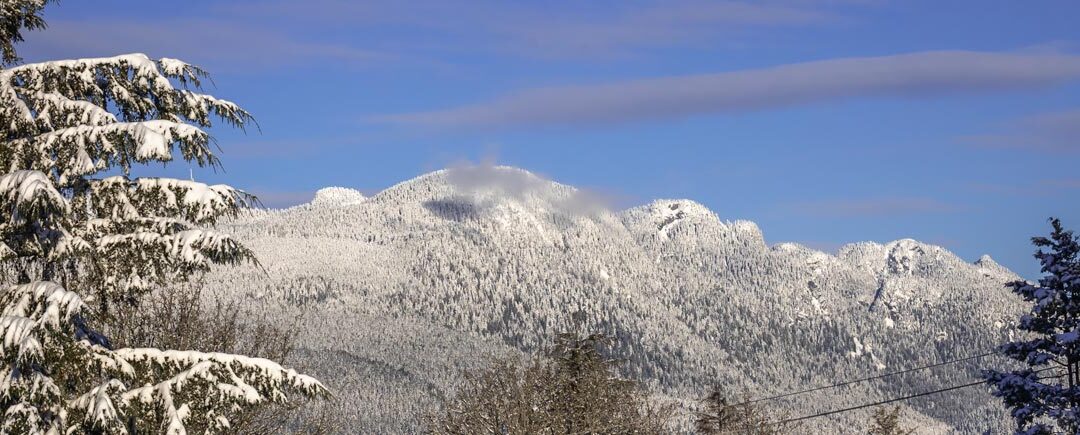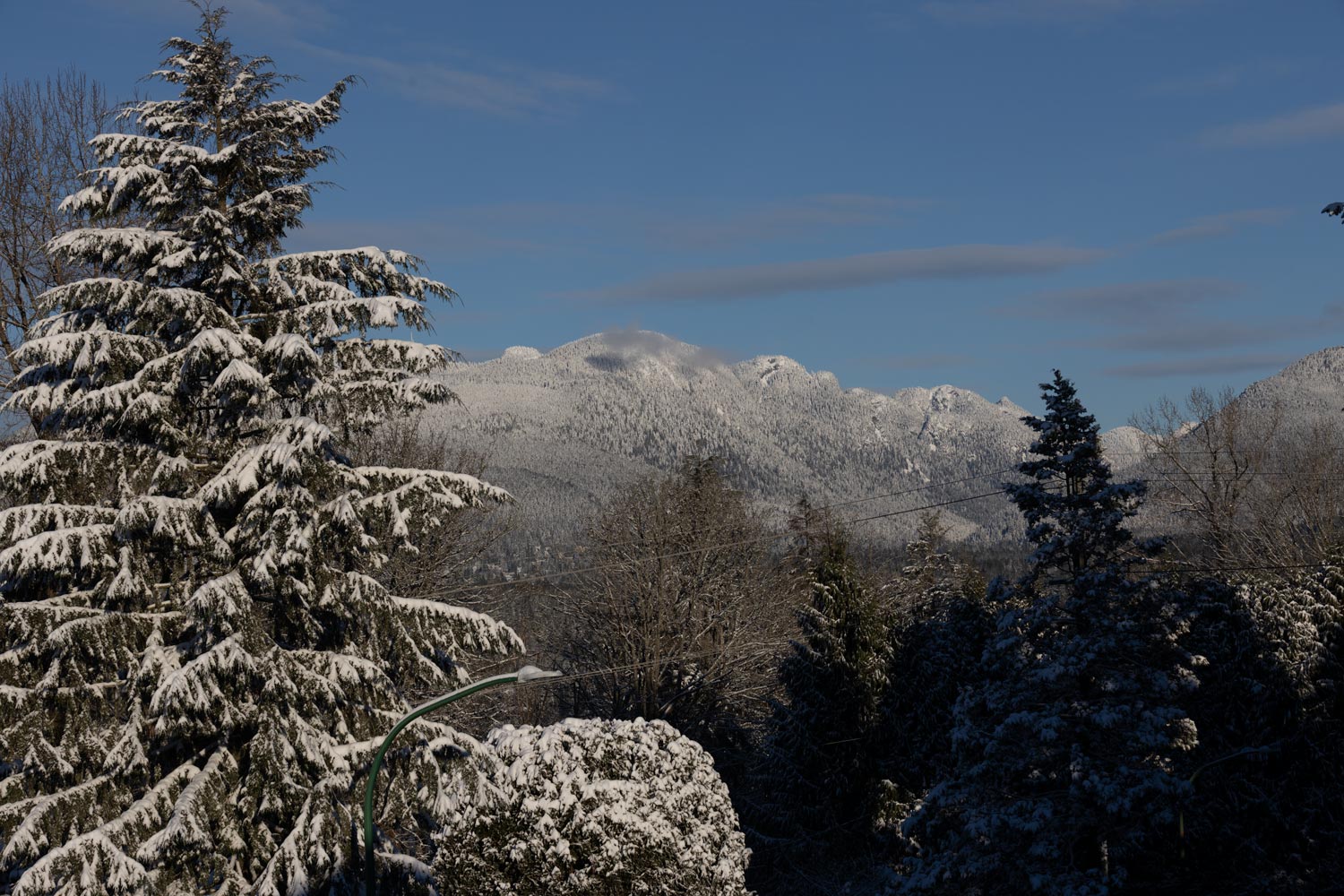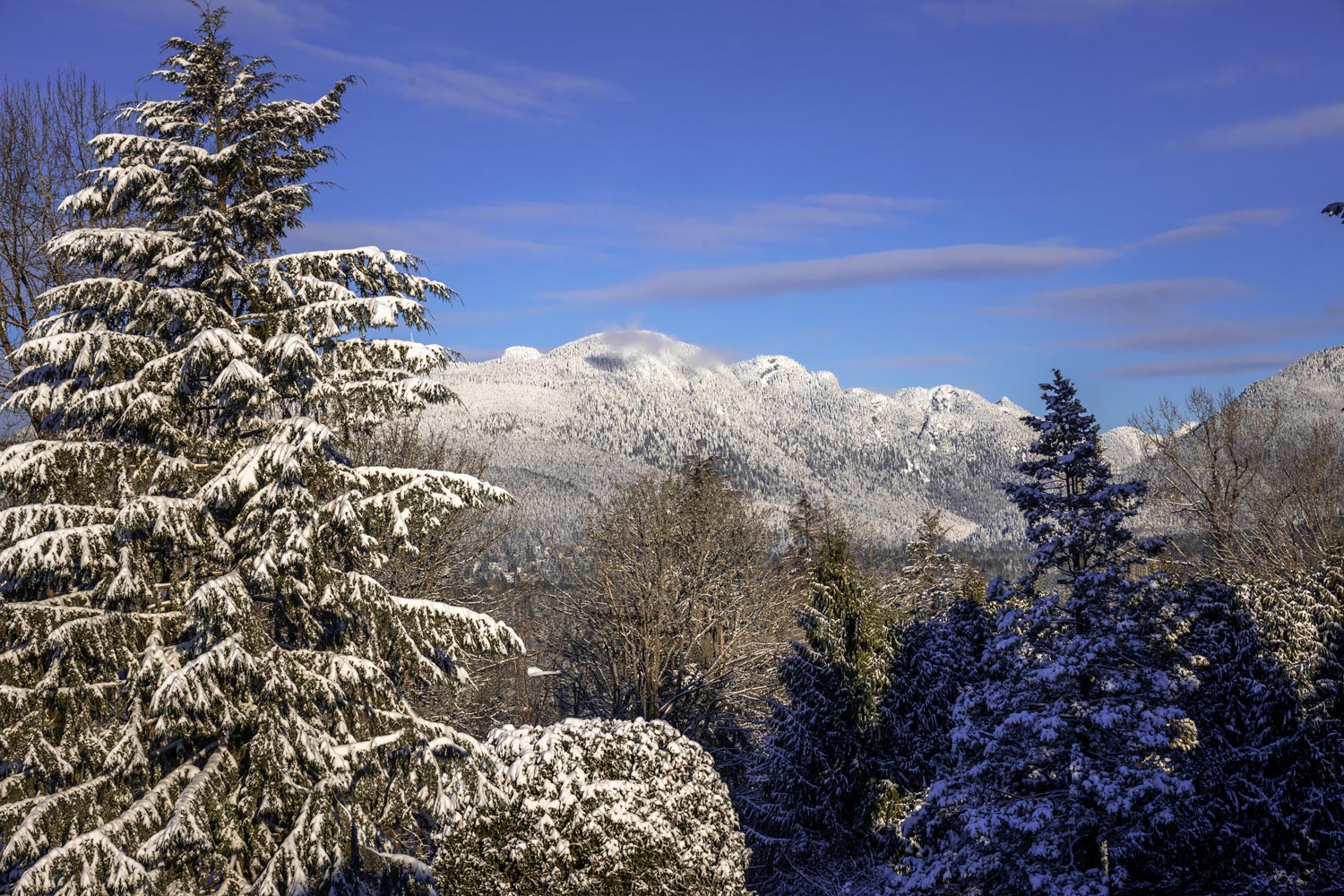There are some days when I come out on the front porch of our home and the picture before me is breathtaking. The light is just right, the air is clear, and the clouds in the sky are perfect. I had such a day this past winter and, of course, I got my camera and took a picture. Finally this week I got around to having a look at the image. Below is the picture from my front steps.
This is the picture from my front steps taken one morning this past winter. As ou can see, my camera appears to have under exposed it and rendered the colors dark and muddy. This is the RAW file direct from the camera without any adjustments.
Once I had it up on my computer screen I was disappointed because the way I remember the day it had far better clarity and punch. I remember the colors were brilliant and the sky was beautiful This picture, although it was pretty, seemed to be dull and flat. It did not convey to me what I felt on that morning. Not at all.
I belong to a website called “KelbyOne” which is an educational site for Photoshop and Lightroom and by coincidence I had been reading there about using the adjustments in the develop module of Lightroom so I used this image to follow along in the magazine article to see what I could do to give more depth and feeling to the picture.
As I worked through the techniques in the magazine, adjusting the white point, changing tones, bringing up the shadows, I began to think about the raging arguments amongst photographers past and some present about he process of manipulating an image. In the last half of the 19th century, only a few years after the invention of photography, manipulation of images was all the rage and then there was a reaction against it saying that the photograph as the camera saw it was the holy grail and there should be no manipulation. And today we still come across that sentiment occasionally. There are those who feel that the image as it comes from the camera is sacrosanct. But the issue has many faces.
If we are talking about a news photo or photographic record of some event or information, then manipulation is generally wrong. However, when it comes to an artistic endeavour, the rules are different. The camera and the printer are the paint brushes of the artist allowing her to put color on the canvas. What those colors are should be totally at the discretion of the artist. We are not looking for photographic detail but artistic feeling. You may like the result, or not, but you must judge the result and not the process.
Now, getting back to what I was doing, I wanted my picture to have the same impact that the original scene had. And to do that I had to compensate for a camera that did not see light the way I did. Not only do digital sensors see color differently but the camera is set up to create the best scene it can across the whole image. And so a lot of averaging is done, and color and contrast are sacrificed. And how can a camera know how a scene impacted me and what was necessary to carry that emotional content forward. It simply can’t. So the process is not complete when the shutter is pressed.
Once the image is captured and facing you on your computer screen the challenge is to work with it to find the sparkle that drew me to the picture in the first place. The tools for doing this are many and I am still learning. That is why I worked my way through the article “Five Steps to get the Best Out of You Raw Files” at page 28 of the May 2022 issue of Photoshop User. The result is below and this image is what I saw that morning from my front steps.
This is my image after working my way through the Lightroom article in Photoshop User magazine. It is brighter and much more what I saw that early winter morning.
But I was still not satisfied. Living in a subdivision in Vancouver there are street lights and wires across the bottom half of the image. I decided to remove them. Now, in a news photo this would not be appropriate, but, this is not a news photo: this is Art (or at least I think it is). So, I removed the street lamps and wires, I tweaked the brightness and contrast and added a touch more sharpening. And below is my final image. Now I am happy with it.
And this is my final image without the street lights and wires. Such changes are not acceptible in news photographs and other records that are depended upon for accuracy, but in works intended as art photography, they are not objectionable. They are just part of the artist’s tools.
I have explained my thinking in this process and said a little about what I did. But that is not relevant to my final image. My photograph, once printed, must stand on its own. Whether it impresses you has nothing to do with how I made it. Nothing! The printed image must stand or fall on how the print moves you. The process, the raw files, the intermediate steps, all fall away. The art is in the print alone.
Remember, my print of this scene may pass through several hands, possibly even through several decades and I will not be there to explain the picture. It will be alone to speak to the viewer. And that is the essence of art and why the print must be the only true representative of all artistic photography.
This website is the work of R. Flynn Marr who is solely responsible for its contents which are subject to his claim of copyright. User Manuals, Brochures and Advertising Materials of Canon and other manufacturers available on this site are subject to the copyright claims and are the property of Canon and other manufacturers and they are offered here for personal use only.





